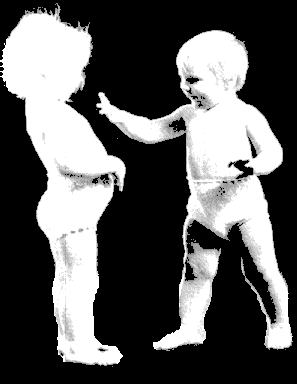
|
Science Time Line 1885
Mental Health Time Line 1887 |


|
Jean Martin Charcot and Blanche Wittmann |
Jean Martin Charcot (1825 to 1893) was appointed physician-in-charge at the Salpêtriere hospital for nervous diseases (a Paris hospital for poor women) in 1862. In 1881 he was given the title Professor of Neuropathology (nerve illness).
Earlier in the nineteenth century, the Salpetriere had been an asylum that aimed to cure its patients. This "asylum therapy" had proved a failure and, by the end of the century, it was widely believed that insanity is incurable. The insane were sent to asylums to protect them from exploitation and to protected society from them. A large asylum like the Salpetriere, however, offered a doctor an enormous field for research. The patients were cases that could be clinically analysed and kept on the wards, almost like a living museum. When they were dead, their brains and nervous systems could be preserved and dissected to see what damage to them might have caused the symptoms they exhibited in their lives.
In the medical tradition of Western Europe, to be medical something had to concern the body. If a state of mind was considered an illness, it implied that something wrong with the body was causing the state of mind. This is no longer the case. Today a state of mind can be described as due to illness, even though it is not believed to have a biological basis. The work of Charcot was an important stage in this development from body-based- psychiatry to a psychiatry that includes functional disorders with no suspected biological base.
The case of Charcot's char-lady illustrates the body-based approach to psychiatry. This account is taken from Freud's account of Charcot:
""During his student days chance brought him into contact with a charwoman who suffered from a peculiar form of tremor and could not get work because of her awkwardness. Charcot recognised her condition to be 'choreiform paralysis', already described by Duchenne, of the origin of which, however, nothing was known. In spite of her costing him a small fortune in broken plates and platters, Charcot kept her for years in his service and, when at last she died, could prove in the autopsy that 'choreiform paralysis' was the clinical expression of multiple cerebro-spinal sclerosis."Charcot never gave up the idea that genuine medical illnesses have a biological base, and that base is neurological. His theories of hypnotism and hysteria, however, paved the way for others to break the link between a damaged body and a malfunctioning mind
Hypnotism
In 1882, Charcot persuaded the French Academy of Sciences that hypnotism is a respectable subject of study. He argued that it is a pathology of certain people's nerves. Its victims have nerves that are susceptible to hypnotism and (in its "grand hypnotisme" form") it behaves like an illness with three clinical stages: catalepsy, lethargy and somnambulism. His clinical picture of hypnotism is similar in form to the clinical picture he previously developed for epilepsy.
Charcot developed clinical demonstrations of his theories at the Salpetriere in the form of public performances, with himself as the lecturer and trained patients as the models. His most famous model was Blanche Wittmann. A painting by Andre Brouillet, in 1887, shows Charcot demonstrating on Blanche Wittmann. It is called Une Lecon Clinique a la Salpetrie, and is now in The National Library of Medicine, Bethesda, Maryland. The drawing below shows the central characters.

Click for Blanche Wittmann Jean Martin Charcot Sigmund Freud |
Blanche Wittmann's faints are focus from which we can explore
|
| See the timelines for social science and mental health |
|
I use extracts from Freud's last work, An Outline of Psychoanalysis (1938)
as a summary of his theories. His comments
On John Stuart Mill
give some indication of the break he was making with
traditional, rational, approaches to the analysis of society.
The extracts from Interpretation
of Dreams (1900) give a detailed insight into his early work and
those from Totem and Taboo (1913)
show how he related the analysis of individual personality to
the analysis of society. There is also
a collection of shorter
extracts for other works.
|





 Click coloured words to go where you want
Click coloured words to go where you want

